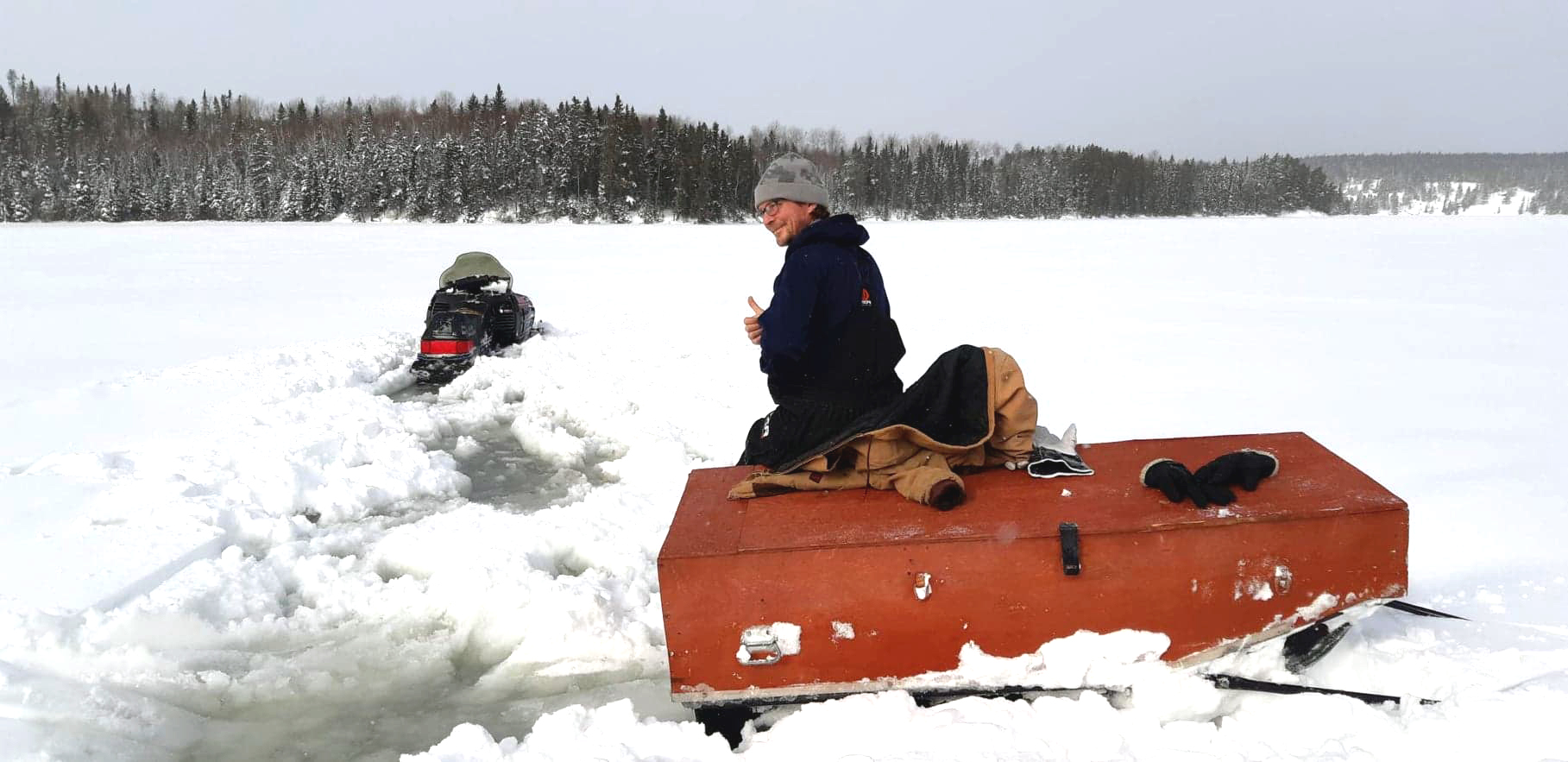The best way to stay safe in slush: Stay out of it!
You need to understand why and how slush forms, and then avoid it at all costs
Advertisement
Just the mention of “slush” sends shivers up my spine. It is the curse of winter anglers, and because of all the snow we’ve been getting this winter, it’s building up badly on many lakes and rivers across the country. As a matter of fact, good friend and Dryden area fishing guide John Jakobs sent me the image in this blog, showing a friend of his who ran into the miserable stuff on the weekend.
[easy-tweet tweet=”@GordPyzer explains how dangerous slush areas form on the ice, and the rules you need to know to stay safe, esp when on a #snowmobile” via=”no” user=”OutdoorCanada” hashtags=”icefishing, winterfun”]
Advertisement
What happens is that the weight of the deep snow pushing down on the elastic ice, makes it bend into a saucer-like shape, forcing water to seep up through the many cracks, crevices and old ice fishing holes. The water then floods the surface of the ice underneath the snow, that acts like a down-filled jacket, preventing it from freezing. Even when the air temperature dips into the dangerously cold zone, the water typically does not freeze. Then when you walk out on the lake or, worse yet, take your snowmachine or 4×4 quad, you break through and find yourself in water often approaching your knees.
The worse slush attack I ever encountered happened many years ago, when two buddies and I were miles back in the remote wilderness south of Vermilion Bay, Ontario. We were ice fishing for lake trout and coming home via snowmachines at sundown. That’s when we hit a massive slush pile in the middle of the lake that caught the trailers we were pulling, and bogged us down. We managed to take off the trailers, but our machines were iced up badly, and bogged down in the wet sloppy snow. I bet they weighed closed to 1,000 pounds each.
Our machines were iced up badly, and bogged down in the wet sloppy snow
We eventually managed to tilt them on their sides, and then went in to shore, where we cut down fresh tree limbs and bows (you need to carry a good axe or saw with your at all times) and hauled them out to the machines. We laid down a huge bed of green boughs, sticks and tree limbs to elevate the tracks up and out of the slush. But when we started up the machines and tried to take off, they immediately bogged down again in the water—which was now well above the tops of our boots.
Advertisement
After repeated attempts to free our machines, our energy levels were sapped, and there was nothing left to do but start walking out of the bush. This was, of course, in the days before cell phones.
In the cold moonlight we trudged down the lake until eventually we reached the Canadian Pacific Railway main line. Then we started walking down the tracks eastward to a small bush road we knew at some point crossed them. It was harrowing to say the least, but as we entered a narrow rock cut we could hear an approaching train. All we could do is stand off to the side, get showered with snow and watch, as the train roared passed us. Imagine the feeling—we were soaking wet and freezing—as we looked up in the pitch black darkness and saw all of the people in the dining car, eating their dinners and enjoying a drink. Talk about adding insult to injury.
Advertisement
When you feel slush sucking your machine, don’t slow down
We eventually made it out and phoned for a ride, but it was midnight before we were back home. And then we had to wait two or three weeks before the snow melted and the slush tightened up, before we could go back in and recover our snowmachines, ice fishing equipment and all of our camera gear.
So, the first rule of dealing with slush is elementary: avoid it at all costs. The second rule is to leave your sleds, ice huts, toboggans, shacks—anything you might think about pulling—at home. Today’s modern snowmobiles usually have enough power to keep you up, floating across even in the worst slush, but if you’re pulling something heavy, it will bog down and cause you no end of grief.
And when you feel slush sucking your machine, do not slow down. I’ll never forget when my grandson Liam was just a little kid, maybe seven or eight years old and he was sitting up front on the snowmachine with me. He was steering and running the snowmobile, when we suddenly saw another snowmobiler well ahead of us waving his arms. We thought he was just being friendly, so we didn’t pay much attention, until the back of the machine dropped dramatically, we slowed down quickly and I spotted a rooster tail of slush flying into the air. That is when I realized the other snowmobiler was warning us about the slush, so I quickly wrapped my hand over Liam’s, kept the throttle pinned and started yelling, “Don’t slow down!”
We made it through, but only barely.
Gawd, I hate slush.

